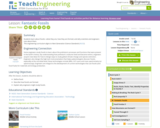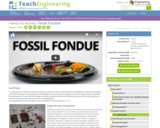
Teach language, vocabulary and listening comprehension with Celebrity Vocab clips! [1:25]
- Subject:
- Career and Technical Education
- Mathematics
- Science
- Material Type:
- Lesson
- Provider:
- PBS LearningMedia
- Date Added:
- 12/01/2022

Teach language, vocabulary and listening comprehension with Celebrity Vocab clips! [1:25]

Biology 2e is designed to cover the scope and sequence requirements of a typical two-semester biology course for science majors. The text provides comprehensive coverage of foundational research and core biology concepts through an evolutionary lens. Biology includes rich features that engage students in scientific inquiry, highlight careers in the biological sciences, and offer everyday applications. The book also includes various types of practice and homework questions that help students understand—and apply—key concepts. The 2nd edition has been revised to incorporate clearer, more current, and more dynamic explanations, while maintaining the same organization as the first edition. Art and illustrations have been substantially improved, and the textbook features additional assessments and related resources.


By the end of this section, you will be able to do the following:
Describe the features that characterized the earliest animals and approximately when they appeared on earth
Explain the significance of the Cambrian period for animal evolution and the changes in animal diversity that took place during that time
Describe some of the unresolved questions surrounding the Cambrian explosion
Discuss the implications of mass animal extinctions that have occurred in evolutionary history

Teachers can download this teaching package that introduces students to the science of paleontology. Fossil formulation and details about the work of paleontologists are discussed. Find out how paleontologists discover, stabilize, and transport fossils. Students will enjoy the hands-on activities described in the lessons. Teachers will appreciate the student handouts provided, as well as the list of resources.

This article recounts the events on the day in 1990 when Dr. David Elliot, an Ohio State geologist, found a dinosaur fossil high in the Transantarctic Mountains of Antarctica.

The Dinosaur Museum is located in Blanding, Utah. Use this site to learn all about the exhibits and dinosaur information.

This expository article for elementary students describes the dinosaurs that lived in polar regions as well as the adaptations that helped them survive in the dark and cold environment. Modified versions for younger grades are available.

Students learn about fossils what they are, how they are formed, and why scientists and engineers care about them.

To understand how fossils are formed, students model the process of fossilization by making fossils using small toy figures and melted chocolate. They extend their knowledge to the many ways that engineers aid in the study of fossils, including the development of tools and technologies for determining the physical and chemical properties of fossilized organisms, and how those properties tell a story of our changing world.

Smithsonian Education presents "Fossils: Footprints Across Time." Teachers can download this teaching package that introduces students to the study of fossils. Students will discover what fossils can teach us about the Earth as it was millions of years ago. In addition, they will also learn how paleontologists organize their findings into time charts to give us a better picture of Earth's geologic history. Students will enjoy the hands-on activities described in the lessons. Teachers will appreciate the student handouts provided, as well as the list of resources.

Meet Lupe, a young mammoth who lived during the Ice Age, and learn all about her existence during that time period. Take a virtual trip to the actual mammoth dig site in San Jose and see what the scientists discovered.

Follow Des Collins, a paleontologist, as he looks back into deep time to study the Cambrian explosion in this video. He studies fossils from the Burgess Shale in Canada. He describes the excitement and difficulty of putting together an entire fossil Anomalacaris. [6:12]

This colorful, interactive site demonstrates how fossils can be used to discover a range of information about the past. Topics include Past Lives, Paleoecology, Geologic History, and Biodiversity.

An easy-to-understand explanation of what it means to either hot- or cold-blooded.

Learn about what a fossil is, the different types that scientists use for study, and processes that form them. [2:57]

What's the word on street? Murray explains the vocabulary word "paleontologist." [0:30]